Black Decker QP250 Bruksanvisning
Black Decker
Borrmaskin
QP250
Läs gratis den bruksanvisning för Black Decker QP250 (5 sidor) i kategorin Borrmaskin. Guiden har ansetts hjälpsam av 4 personer och har ett genomsnittsbetyg på 4.4 stjärnor baserat på 2.5 recensioner. Har du en fråga om Black Decker QP250 eller vill du ställa frågor till andra användare av produkten? Ställ en fråga
Sida 1/5

Important Safety Instructions
WARNING: When using electric tools, basic safety precautions should always be followed to
reduce risk of fire, electric shock, and personal injury, including the following:
READ ALL INSTRUCTIONS
Double Insulation
Double insulated tools are constructed throughout with two separate layers of electrical insu-
lation or one double thickness of insulation between you and the tool’s electrical system.
Tools built with this insulation system are not intended to be grounded. As a result, your tool
is equipped with a two prong plug which permits you to use extension cords without concern
for maintaining a ground connection.
NOTE: Double insulation does not take the place of normal safety precautions when operat-
ing this tool. The insulation system is for added protection against injury resulting from a pos-
sible electrical insulation failure within the tool.
CAUTION: WHEN SERVICING USE ONLY IDENTICAL REPLACEMENT PARTS. Repair or
replace damaged cords.
Polarized Plugs
Polarized plugs (one blade is wider than the other) are used on equipment to reduce the risk
of electric shock. When provided, this plug will fit into a polarized outlet only one way. If the
plug does not fit fully in the outlet, reverse the plug. If it still does not fit, contact a qualified
electrician to install the proper outlet. Do not change the plug in any way.
Safety Instructions For All Tools
• KEEP WORK AREA CLEAN. Cluttered areas and benches invite injuries.
• CONSIDER WORK AREA ENVIRONMENT. Don’t expose power tools to rain. Don’t use
power tools in damp or wet locations. Keep work area well lit. Do not use tool in presence
of flammable liquids or gases.
• GUARD AGAINST ELECTRIC SHOCK. Prevent body contact with grounded surfaces. For
example; pipes, radiators, ranges, and refrigerator enclosures.
• KEEP CHILDREN AWAY. Do not let visitors contact tool or extension cord. All visitors
should be kept away from work area.
• STORE IDLE TOOLS. When not in use, tools should be stored in dry, and high or locked-
up place — out of reach of children.
• DON’T FORCE TOOL. It will do the job better and safer at the rate for which it was intend-
ed.
• USE RIGHT TOOL. Don’t force small tool or attachment to do the job of a heavy-duty tool.
Don’t use tool for purpose not intended.
• DRESS PROPERLY. Do not wear loose clothing or jewelry. They can be caught in moving
parts. Rubber gloves and non-skid footwear are recommended when working outdoors.
Wear protective hair covering to contain long hair.
• USE SAFETY GLASSES. Also use face or dust mask if operation is dusty.
• DON’T ABUSE CORD. Never carry tool by cord or yank it to disconnect from receptacle.
Keep cord from heat, oil, and sharp edges.
• SECURE WORK. Use clamps or a vise to hold work. It’s safer than using your hand and it
frees both hands to operate tool.
• DON’T OVERREACH. Keep proper footing and balance at all times.
• MAINTAIN TOOLS WITH CARE. Keep tools sharp and clean for better and safer per-
formance. Follow instructions for lubricating and changing accessories. Inspect tool cords
periodically and if damaged, have repaired by authorized service facility. Inspect extension
cords periodically and replace if damaged. Keep handles dry, clean, and free from oil and
grease.
• DISCONNECT OR LOCK OFF TOOLS when not in use, before servicing, and when
changing accessories, such as blades, bits, cutters.
• REMOVE ADJUSTING KEYS AND WRENCHES. Form habit of checking to see that keys
and adjusting wrenches are removed from tool before turning it on.
• AVOID UNINTENTIONAL STARTING. Don’t carry tool with finger on switch. Be sure
switch is off when plugging in.
• EXTENSION CORDS. Make sure your extension cord is in good condition. When using an
extension cord, be sure to use one heavy enough to carry the current your product will
draw. An undersized cord will cause a drop in line voltage resulting in loss of power and
overheating. The following table shows the correct size to use depending on cord length
and nameplate ampere rating. If in doubt, use the next heavier gage. The smaller the gage
number, the heavier the cord.
Recommended Minimum Wire Size for Extension Cords
Total Length of Cord
25 ft. 50 ft. 75 ft. 100 ft. 125 ft. 150 ft. 175 ft.
7.6 m 15.2 m 22.9 m 30.5 m 38.1 m 45.7 m 53.3 m
Wire Size
18 AWG 18 AWG 16 AWG 16 AWG 14 AWG 14 AWG 12 AWG
• OUTDOOR USE EXTENSION CORDS. When tool is used outdoors, use only extension
cords intended for use outdoors and so marked.
• STAY ALERT. Watch what you are doing. Use common sense. Do not operate tool when
you are tired.
• CHECK DAMAGED PARTS. Before further use of the tool, a guard or other part that is
damaged should be carefully checked to determine that it will operate properly and perform
its intended function. Check for alignment of moving parts, binding of moving parts, break-
age of parts, mounting, and any other conditions that may affect its operation. A guard or
other part that is damaged should be properly repaired or replaced by an authorized serv-
ice center unless otherwise indicated elsewhere in this instruction manual. Have defective
switches replaced by authorized service center. Do not use tool if switch does not turn it on
and off.
• CAUTION: When drilling or driving into walls, floors or wherever live electrical wires may
be encountered, DO NOT TOUCH ANY METAL PARTS OF THE TOOL! Hold the tool only
by insulated grasping surfaces to prevent electric shock if you drill or drive into a live wire.
WARNING: Some dust created by power sanding, sawing, grinding, drilling, and other
construction activities contains chemicals known to cause cancer, birth defects or other
reproductive harm. Some examples of these chemicals are:
• lead from lead-based paints,
• crystalline silica from bricks and cement and other masonry products, and
• arsenic and chromium from chemically-treated lumber (CCA).
Your risk from these exposures varies, depending on how often you do this type of work. To
reduce your exposure to these chemicals: work in a well ventilated area, and work with
approved safety equipment, such as those dust masks that are specially designed to filter
out microscopic particles.
• Avoid prolonged contact with dust from power sanding, sawing, grinding, drilling, and
other construction activities. Wear protective clothing and wash exposed areas with
soap and water. Allowing dust to get into your mouth, eyes, or lay on the skin may promote
absorption of harmful chemicals.
WARNING: Use of this tool can generate and/or disperse dust, which may cause serious
and permanent respiratory or other injury. Always use NIOSH/OSHAapproved respiratory pro-
tection appropriate for the dust exposure. Direct particles away from face and body.
CAUTION: Wear appropriate hearing protection during use. Under some conditions
and duration of use, noise from this product may contribute to hearing loss.
The label on your tool may include the following symbols.
V..............volts
A..............amperes
Hz............hertz
W ............watts
min ..........minutes
............alternating current
........direct current
n
o
............no load speed
............Class II Construction
SPM ........strokes per minute
............earthing terminal
............safety alert symbol
INSTRUCTION MANUAL
Cat. No. QP250
VEA EL ESPAÑOL EN LA CONTRAPORTADA.
SAVE THIS MANUAL FOR FUTURE REFERENCE.
INSTRUCTIVO DE OPERACIÓN, CENTROS DE SERVICIO Y PÓLIZA DE
GARANTÍA. ADVERTENCIA: LÉASE ESTE INSTRUCTIVO ANTES DE USAR EL
PRODUCTO.
CAT. NO. QP250 FORM NO. 617938-00 Copyright © 2003 Black & Decker (APR-03) Printed in U.S.A.
33
33
//
//
88
88
””
””
VV
VV
aa
aa
rr
rr
ii
ii
aa
aa
bb
bb
ll
ll
ee
ee
SS
SS
pp
pp
ee
ee
ee
ee
dd
dd
RR
RR
ee
ee
vv
vv
ee
ee
rr
rr
ss
ss
ii
ii
nn
nn
gg
gg
DD
DD
rr
rr
ii
ii
ll
ll
ll
ll
BEFORE RETURNING THIS PRODUCT
FOR ANY REASON PLEASE CALL
1-800-544-6986
IF YOU SHOULD HAVE A QUESTION OR
EXPERIENCE A PROBLEM WITH YOUR
BLACK & DECKER PRODUCT,
CALL 1-800-544-6986
BEFORE YOU CALL, HAVE THE FOLLOWING INFORMATION AVAILABLE, CATALOG No.,
TYPE No., AND DATE CODE (e.g. 0130M). IN MOST CASES, ABLACK & DECKER REPRE-
SENTATIVE CAN RESOLVE YOUR PROBLEM OVER THE PHONE. IF YOU HAVE ASUGGES-
TION OR COMMENT, GIVE US A CALL. YOUR FEEDBACK IS VITAL TO BLACK & DECKER.
B
PROFESSIONAL GRADE POWER TOOLS
FIG. 1
A
REVERSING
LEVER
(Shown in Forward
Position)
FIG. 2
FIG. 3A
BUBBLE
BULLE
BURBUJA
BUBBLE LEVEL
NIVEAU À
BULLE
NIVEL DE BUR-
BUJA
FIG. 3B
B
PROFESSIONAL GRADE POWER TOOLS
BELT CLIP
PINCE POUR LA
CEINTURE
PINZA PARA EL CIN-
TURON
KEYLESS CHUCK
MANDRIN SANS CLÉ
BROQUERO SIN LLAVE
REVERSING LEVER
INVERSEUR DE
MARCHE
PALANCA DE REVERSA
TRIGGER SWITCH
INTERRUPTEUR À
DÉTENTE
GATILLO INTERRUPTOR
LOCKING BUTTON
BOUTON DE VER-
ROUILLAGE
BOTON DE SEGURO
LANYARD RING
ANNEAU DE RETENUE
DU CORDON
ARILLO
INVERSEUR DE
MARCHE
(en marche avant)
PALANCA DE
REVERSA
(mostrada en posi-
cion de marcha
hacia adelante)
BUBBLE
BULLE
BURBUJA
BUBBLE LEVEL
NIVEAU À
BULLE
NIVEL DE BUR-
BUJA
PROFESSIONAL GRADE POWER TOOLS
®
Produktspecifikationer
| Varumärke: | Black Decker |
| Kategori: | Borrmaskin |
| Modell: | QP250 |
Behöver du hjälp?
Om du behöver hjälp med Black Decker QP250 ställ en fråga nedan och andra användare kommer att svara dig
Borrmaskin Black Decker Manualer
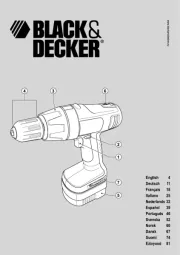
5 September 2025
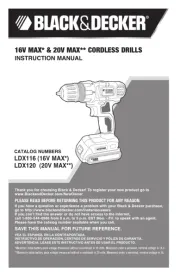
4 September 2025

4 September 2025
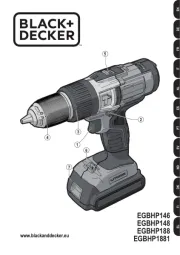
4 September 2025
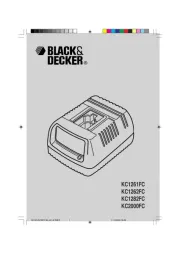
4 September 2025

3 September 2025
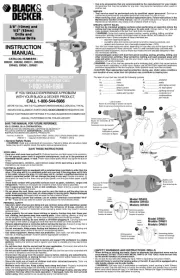
3 September 2025

3 September 2025

3 September 2025
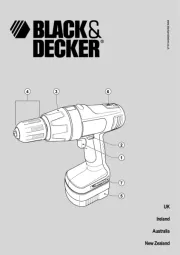
3 September 2025
Borrmaskin Manualer
- Sparky
- Hyundai
- Delta
- Worx
- Rodcraft
- Maktec
- Vonroc
- Hitachi
- Rupes
- Makita
- Meec Tools
- Clas Ohlson
- Scheppach
- Max
- Hazet
Nyaste Borrmaskin Manualer

15 Oktober 2025
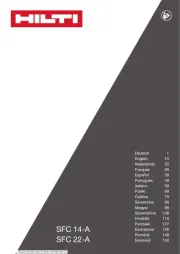
15 Oktober 2025

14 Oktober 2025

13 Oktober 2025
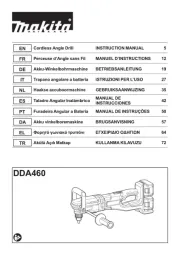
13 Oktober 2025
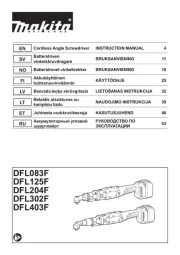
13 Oktober 2025

13 Oktober 2025
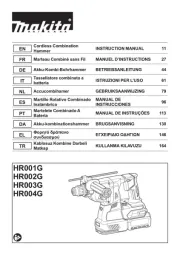
12 Oktober 2025

12 Oktober 2025
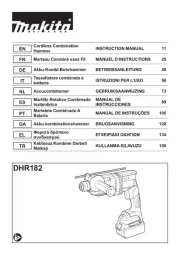
12 Oktober 2025